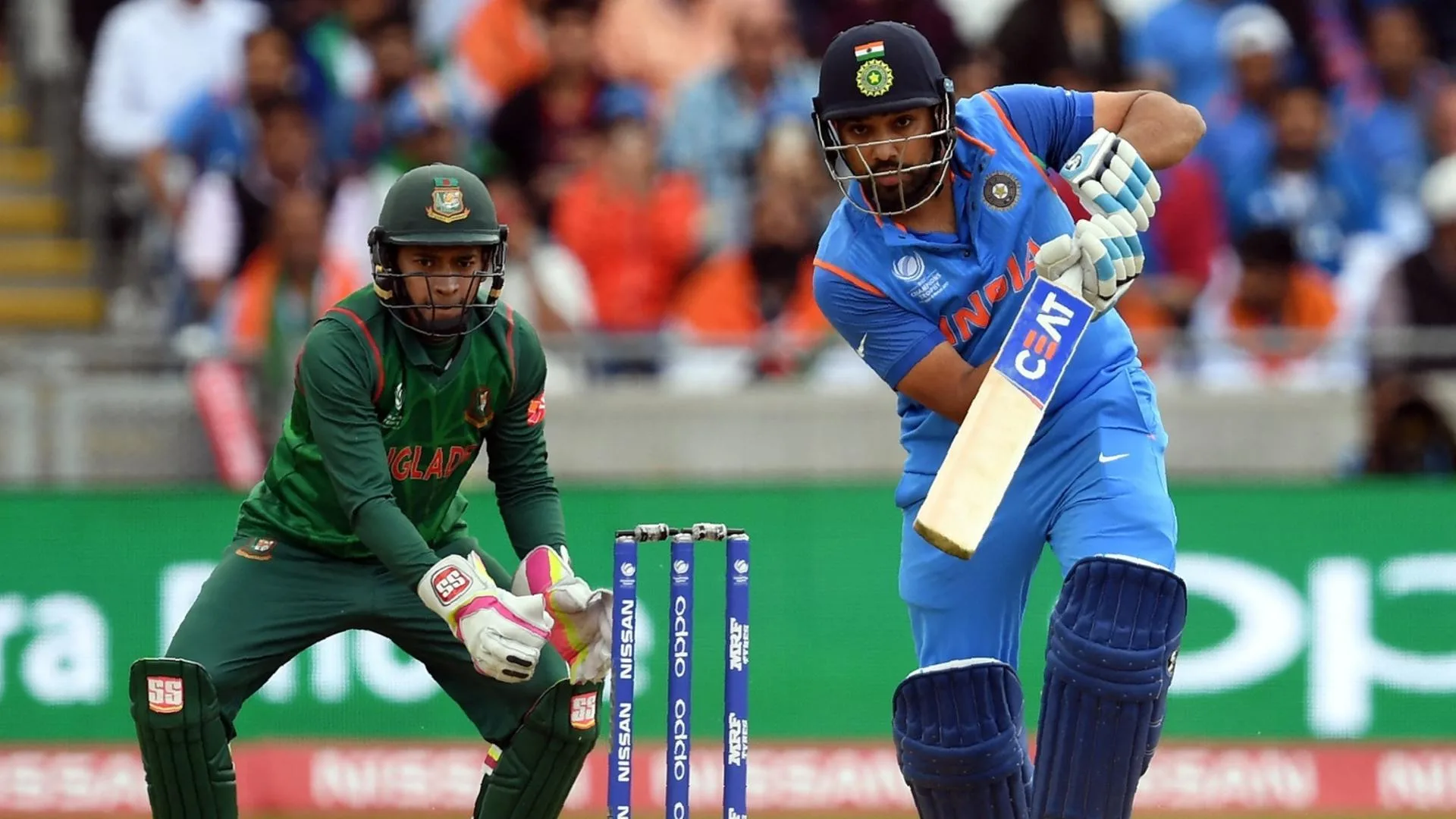Cricket, often described as a religion in India, enjoys immense popularity across the nation. While India has established itself as a cricketing powerhouse, Canada, though a lesser-known team in the cricketing world, has made its presence felt on the international stage. The journey and comparison between the India National Cricket Team and the Canada National Cricket Team present an interesting narrative in the world of cricket. This article delves into the standings, history, and significance of these two teams in the global cricketing landscape. india national cricket team vs bangladesh national cricket team match scorecard
1. Introduction to the India National Cricket Team
The India National Cricket Team, also known as Team India, is one of the most successful and popular cricket teams in the world. The team represents India in international cricket competitions and is governed by the Board of Control for Cricket in India (BCCI). India’s rich cricketing history dates back to its first Test match in 1932, and since then, the team has evolved into a dominant force in all formats of the game—Test cricket, One Day Internationals (ODIs), and Twenty20 Internationals (T20Is). india national cricket team vs bangladesh national cricket team match scorecard
2. what is Canada National Cricket Team
The Canada National Cricket Team, on the other hand, represents a country where cricket is not the most popular sport, but it holds a special place among a passionate community of cricket enthusiasts. Managed by Cricket Canada, the team has been participating in international cricket since the 19th century. Although Canada is considered an Associate Member of the International Cricket Council (ICC), the team has had notable appearances in the ICC Cricket World Cup and has been an important player in the development of cricket in North America.
3. Historical Background and Evolution
India’s Cricketing Journey
India’s journey in international cricket began with its first Test match against England at Lord’s in 1932. Initially, victories were rare, but over time, India developed into a cricketing giant, especially after its first Test series win against England in 1952. The 1983 Cricket World Cup win under Kapil Dev marked a turning point, establishing India as a formidable cricketing nation. With legends like Sachin Tendulkar, Sunil Gavaskar, and Kapil Dev, India’s standing in cricket has only grown stronger.
Canada’s Cricketing History
Canada’s cricketing history dates back to the 1800s, with one of the first recorded international cricket matches played between Canada and the United States in 1844. Although cricket did not gain the same popularity in Canada as it did in other Commonwealth countries, the sport has persisted, largely due to immigrant communities from cricket-loving nations. Canada achieved its peak when it qualified for the ICC Cricket World Cup in 1979, 2003, 2007, and 2011. However, the team has struggled to make a significant impact on the global stage.
4. Head-to-Head Encounters
When comparing India and Canada in terms of head-to-head encounters, it is important to note that these teams have rarely faced each other due to the difference in their standing and regular participation in international tournaments.
ODI Matches
The India and Canada national teams have met in One Day Internationals (ODIs) only on a handful of occasions, with India winning all encounters. Their first match was during the 1979 ICC Cricket World Cup, where India secured a comfortable victory. Subsequent meetings, including those in the 2003 and 2011 World Cups, also resulted in India’s favor, reflecting the disparity in skill and experience between the two teams.
T20 Matches
As of now, India and Canada have not faced each other in any T20 International matches. India’s prominence in T20 cricket contrasts sharply with Canada’s struggles to qualify for major international tournaments in this format.
5. Player Profiles and Key Performances
India’s Star Players
India’s cricketing legacy is marked by the presence of legendary players. Sachin Tendulkar, known as the “God of Cricket,” holds numerous records, including the highest number of runs in both Test and ODI formats. Current captain Rohit Sharma, known for his explosive batting, and Virat Kohli, one of the best modern-day batsmen, continue to elevate India’s performance on the global stage. Bowlers like Anil Kumble, with over 600 Test wickets, and current spearhead Jasprit Bumrah, known for his lethal yorkers, have also contributed significantly to India’s dominance.
Canada’s Notable Players
Canada has had its share of notable players, though none have achieved the global recognition seen in Indian cricket. John Davison, who holds the record for the fastest century in World Cup history, became a household name during the 2003 World Cup. Ashish Bagai, a former captain, is another key player, known for his consistency and leadership. While Canada’s player pool lacks the depth of India’s, these cricketers have made significant contributions to Canada’s cricketing journey.
6. Performance in ICC Tournaments
India’s ICC Tournament Success
India has an illustrious record in ICC tournaments. The team has won the ICC Cricket World Cup twice, in 1983 and 2011, and the ICC Champions Trophy twice, in 2002 (shared with Sri Lanka) and 2013. India also claimed the inaugural ICC T20 World Cup in 2007. These victories have cemented India’s position as one of the top cricketing nations globally.
Canada’s ICC Tournament Participation
Canada’s performance in ICC tournaments has been more modest. The team has participated in four ICC Cricket World Cups (1979, 2003, 2007, and 2011) but has yet to advance past the group stages. Despite this, their participation has been a source of pride and has helped to increase the visibility of cricket in Canada.
7. Cricket Infrastructure and Development
India’s Cricket Infrastructure
India boasts some of the best cricketing infrastructure in the world. The country has numerous world-class stadiums, training facilities, and academies, such as the National Cricket Academy in Bangalore. The Indian Premier League (IPL) has also played a significant role in developing cricketing talent, providing a platform for young players to showcase their skills alongside international stars.
Canada’s Cricketing Infrastructure
In contrast, Canada’s cricketing infrastructure is still developing. The sport is primarily played at an amateur level, with limited facilities and resources. However, Cricket Canada has been working to improve infrastructure, focusing on grassroots development and increasing participation among youth. The construction of dedicated cricket grounds and the establishment of local leagues are steps in the right direction.
8. Current Team Standings
India’s Current Standing
As of the latest ICC rankings, India consistently ranks among the top teams in all three formats—Tests, ODIs, and T20Is. The team’s depth in batting, strong bowling attack, and strategic leadership have made them a dominant force in international cricket. India’s strong performances in bilateral series and ICC tournaments continue to reinforce their top-tier status.
Canada’s Current Standing
Canada, as an Associate Member of the ICC, competes primarily in the ICC World Cricket League and regional tournaments. The team’s rankings fluctuate, and they are often found outside the top-tier teams. Despite these challenges, Canada remains a competitive side within the Associate Member circuit and continues to strive for qualification in major ICC tournaments.
9. The Role of Domestic Cricket
India’s Domestic Cricket Scene
India’s domestic cricket structure is one of the strongest in the world. The Ranji Trophy, Duleep Trophy, and Vijay Hazare Trophy are just a few examples of the domestic tournaments that have produced some of the finest cricketers for the national team. The Indian Premier League (IPL) has also revolutionized cricket in India, offering a platform for both seasoned and emerging players to perform at a high level.
Canada’s Domestic Cricket Structure
Canada’s domestic cricket structure is less developed, with regional leagues being the primary platform for players to showcase their talent. The Global T20 Canada, a T20 league introduced in 2018, has been a significant step towards enhancing the competitive level of cricket in the country, attracting international players and providing exposure to Canadian cricketers.
10. Future Prospects and Challenges
India’s Future in Cricket
The future of Indian cricket looks promising, with a strong pool of young talent ready to take over from the current generation of stars. India’s investment in cricketing infrastructure, coaching, and grassroots development ensures a steady pipeline of players. However, maintaining consistency and managing the workload of players in a cricket-packed calendar remain challenges.
Canada’s Cricketing Future
For Canada, the future of cricket presents both opportunities and challenges. The increasing interest in cricket, driven by immigrant communities, offers a chance to grow the sport in the country. However, limited resources, infrastructure, and the need for greater government and corporate support are significant hurdles that need to be overcome to elevate Canada’s standing in international cricket.
11. The Impact of Cricket Culture
Cricket’s Cultural Impact in India
In India, cricket is more than just a sport—it’s a part of the national identity. Cricket has the power to unite people across different regions, languages, and cultures. The sport’s impact on Indian culture is profound, influencing everything from fashion to film and playing a significant role in the social fabric of the country.
Cricket’s Cultural Presence in Canada
In Canada, cricket’s cultural impact is more niche, primarily among immigrant communities from cricket-loving nations like India, Pakistan, and the Caribbean. However, as the sport grows, it has the potential to become a more significant part of Canada’s diverse cultural landscape, fostering greater inclusivity and community engagement.
12. Comparing Coaching and Support Staff
India’s Coaching and Support Structure
India’s cricketing success is supported by a robust coaching and support staff structure. The team benefits from the expertise of world-class coaches, analysts, physiotherapists, and mental conditioning experts. The BCCI’s emphasis on hiring top-tier professionals ensures that players receive the best guidance and support.
Canada’s Coaching and Support
Canada’s coaching structure is developing, with a focus on improving the quality of coaching at the grassroots level. The appointment of experienced coaches, often with international playing experience, has helped in improving the skills of Canadian cricketers. However, more investment is needed to build a support system that can compete with top-tier cricketing nations.
13. Fan Base and Media Coverage
India’s Cricketing Fan Base
India’s fan base is arguably the largest and most passionate in the world. Indian cricket fans are known for their unwavering support, whether the team wins or loses. The extensive media coverage of cricket in India, with dedicated sports channels and widespread social media engagement, ensures that cricket remains in the national spotlight year-round.
Canada’s Cricket Fans
In Canada, the cricket fan base is smaller but growing, particularly in regions with large South Asian and Caribbean communities. Media coverage of cricket in Canada is limited compared to India, but the rise of streaming platforms and social media has made it easier for fans to follow the sport. The success of initiatives like Global T20 Canada has also helped increase the visibility of cricket.
14. Economic Impact of Cricket
The Economic Power of Indian Cricket
Cricket is a major economic driver in India, contributing significantly to the sports industry. The Indian Premier League (IPL) alone is a multi-billion dollar enterprise, attracting global sponsorship and media rights deals. The BCCI is one of the richest cricket boards in the world, and the economic impact of cricket extends to tourism, merchandise sales, and job creation.
Cricket’s Economic Role in Canada
In Canada, cricket’s economic impact is modest but growing. The Global T20 Canada league has attracted international attention and investment, providing a boost to the local economy. As cricket gains popularity, there is potential for increased sponsorship, media rights deals, and the development of a cricket-based sports industry in Canada.
15. Conclusion: The Road Ahead for India and Canada in Cricket
The comparison between the India National Cricket Team and the Canada National Cricket Team highlights the vast differences in their cricketing journeys, standing, and impact. While India enjoys a position of dominance and widespread popularity, Canada is on a journey of growth and development. The road ahead for both teams is filled with opportunities and challenges. India’s focus will be on maintaining its top position and nurturing new talent, while Canada will aim to build a stronger foundation and carve out a place for itself in the global cricketing arena.
As cricket continues to evolve, the relationship between these two teams—though different in many respects—serves as a reminder of the sport’s global reach and its ability to bring together diverse cultures and nations on a common platform.
india national cricket team vs bangladesh national cricket team match scorecard



